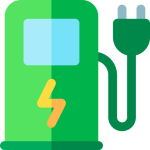
New research shows the value of some of Australia’s most popular second‑hand electric vehicles has plunged sharply after just two years, opening up a market of bargains for buyers – and headaches for sellers and policymakers.
CarsGuide researchers analysed classified listings on Gumtree, Autotrader and CarsGuide over a 24‑month period and tracked seven commonly traded EV models. The data covers January 2023 to December 2024 and found the Tesla Model 3 was the most frequently listed EV, appearing in 7,795 adverts. The decade‑old Nissan LEAF followed with 5,633 listings, and the MG ZS EV placed third with 3,045.
Price falls were dramatic for several models. The Tesla Model Y’s median asking price plummeted from $79,950 in January 2023 to $53,987 in December 2024 – a 36 per cent decline. The BYD Atto 3, marketed as a relatively affordable EV, saw median prices fall 29 per cent across the period, from $51,990 to $36,990. The MG ZS EV also suffered a notable drop, from $48,071 to $34,300 over the same two years.
Despite marked reductions in listed prices for the Model 3 and Model Y, the number of Tesla adverts remained broadly static across the monitoring window. CarsGuide suggests this steadiness may indicate Teslas are turning over more quickly than other brands, though it cautioned that additional data would be needed to substantiate that interpretation. Not all models followed the downward trend. Researchers noted the Hyundai Kona’s used values increased following the introduction of a second‑generation model, demonstrating how fresh product cycles can buoy the second‑hand market.
Why are prices tumbling?
Industry observers point to waning demand for used EVs as one of the chief drivers behind falling selling prices – a pattern previously observed in more mature European markets. Other contributing factors include rapid improvements in new‑car specs, generous new‑car discounts, uncertainty about battery longevity and limited consumer confidence in second‑hand EV warranties and battery health. Lessons from Europe and possible remedies European markets suggest several interventions that could restore confidence and support used EV values. Proposals include government‑backed battery health certificates to reassure conservative buyers, extending incentives to older electric cars, and public information campaigns highlighting the benefits and total cost of ownership of used EVs compared with internal‑combustion models. Advances in battery technology – including batteries designed to last more than one million kilometres – would also help shift perceptions among cautious buyers.
Manufacturer initiatives may play a role too. Nissan is trialling mass buy‑back offers that could be communicated directly through a car’s infotainment system, giving owners a clear, guaranteed exit route. Such programs are partly motivated by a growing market for “second‑life” EV batteries, which can be repurposed for residential and commercial energy storage paired with renewables.
What it means for buyers
For prospective buyers, falling prices present an opportunity to acquire EVs at lower entry points, though due diligence on battery condition and warranty status is essential. Sellers and dealers will need to adapt pricing and sales strategies to a market where depreciation is accelerating. For policymakers, the slump highlights the importance of measures that support buyer confidence – from transparent battery diagnostics to targeted incentives – if governments want a sustainable, healthy used EV market.
Conclusion
The rapid fall in used EV prices in Australia underscores the growing pains of an evolving market. While lower prices open the door for more Australians to switch to electric mobility, they also expose vulnerabilities in battery confidence, resale frameworks and incentives. Addressing these issues through better data, consumer protections and industry initiatives will be key to stabilising the second‑hand EV market and unlocking the broader benefits of electrification.
About EV Evolution
EV Evolution is the leading online platform dedicated to Australian electric vehicle owners and enthusiasts. We foster a vibrant community, delivering essential EV news and insights, and enhancing user engagement through our innovative, AI-powered chatbot for dynamic discussions. Our mission is to empower Australian electric vehicle owners and enthusiasts by fostering a vibrant, AI-driven online community that connects, informs, and advances the nation’s electric vehicle landscape.




